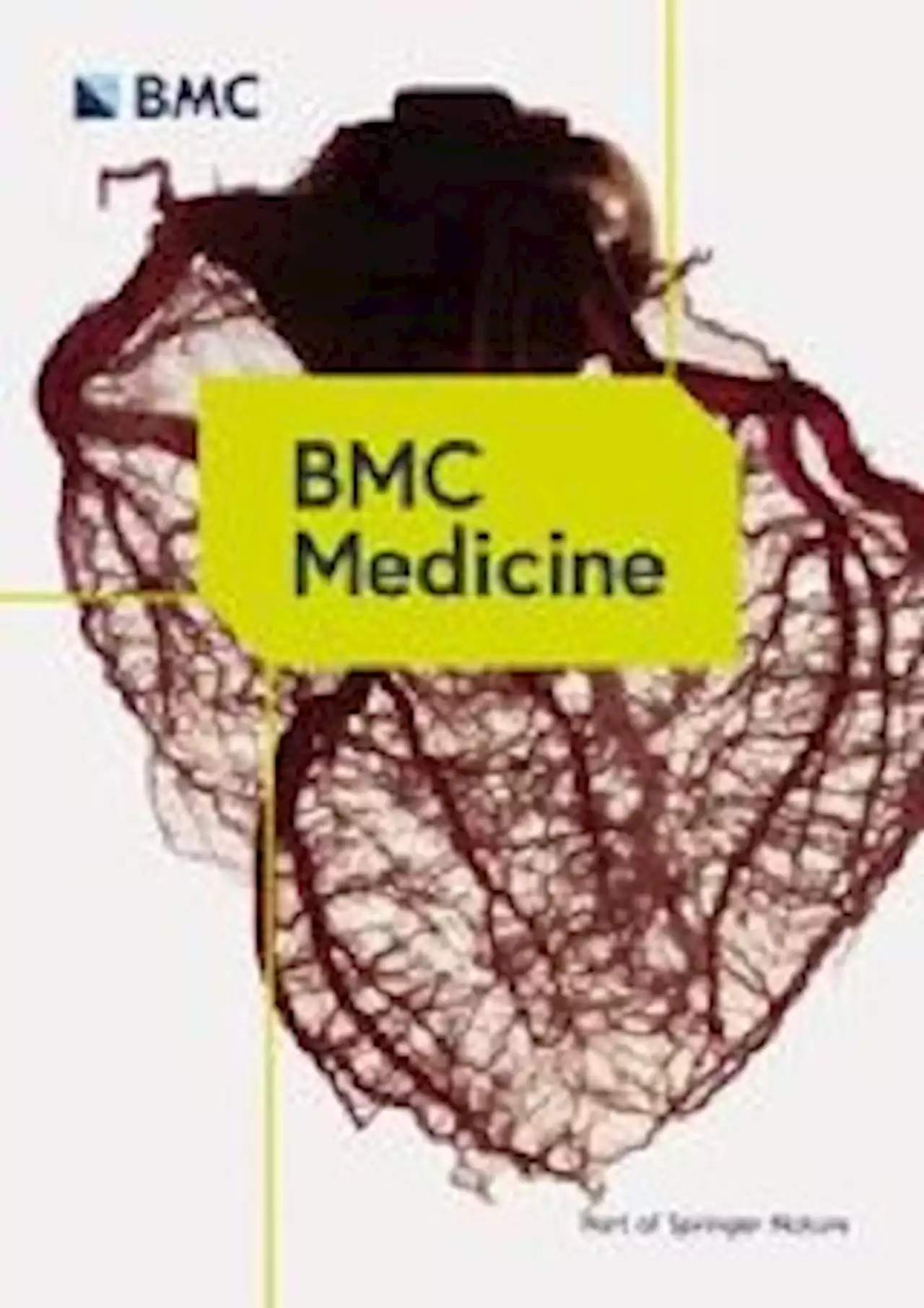Exploring the impact of teledentistry on kids' wellness
Teledentistry has demonstrated to expedite oral health consultations, diagnosis, and treatment planning while mitigating COVID-19 transmission risk in dental offices. However, the use of teledentistry by clinicians remains suboptimal. Therefore, this study aimed to determine the perceptions and practices of teledentistry among dentists during the COVID-19 pandemic in Ontario, Canada, and identify associated factors.
Version 28.0 was used for statistical analysis.Overall, 456 dentists completed the survey. The majority were general dentists , worked in private practices , were between 55 and 64 years old , and had over 16 years of professional experience . Approximately 49.3% reported using teledentistry; 13% started before the pandemic, and 36% during the pandemic. The most common reason for non-utilization was a lack of interest .
United Kingdom Latest News, United Kingdom Headlines
Similar News:You can also read news stories similar to this one that we have collected from other news sources.
 Associations between mortality from COVID-19 and other causes: A state-level analysisBackground During the COVID-19 pandemic, the high death toll from COVID-19 was accompanied by a rise in mortality from other causes of death. The objective of this study was to identify the relationship between mortality from COVID-19 and changes in mortality from specific causes of death by exploiting spatial variation in these relationships across US states. Methods We use cause-specific mortality data from CDC Wonder and population estimates from the US Census Bureau to examine relationships at the state level between mortality from COVID-19 and changes in mortality from other causes of death. We calculate age-standardized death rates (ASDR) for three age groups, nine underlying causes of death, and all 50 states and the District of Columbia between the first full year of the pandemic (March 2020-February 2021) and the year prior (March 2019-February 2020). We then estimate the relationship between changes in cause-specific ASDR and COVID-19 ASDR using linear regression analysis weighted by the size of the state’s population. Results We estimate that causes of death other than COVID-19 represent 19.6% of the total mortality burden associated with COVID-19 during the first year of the COVID-19 pandemic. At ages 25+, circulatory disease accounted for 51.3% of this burden while dementia (16.4%), other respiratory diseases (12.4%), influenza/pneumonia (8.7%) and diabetes (8.6%) also contribute. In contrast, there was an inverse association across states between COVID-19 death rates and changes in death rates from cancer. We found no state-level association between COVID-19 mortality and rising mortality from external causes. Conclusions States with unusually high death rates from COVID-19 experienced an even larger mortality burden than implied by those rates alone. Circulatory disease served as the most important route through which COVID-19 mortality affected death rates from other causes of death. Dementia and other respiratory diseases made the second and third l
Associations between mortality from COVID-19 and other causes: A state-level analysisBackground During the COVID-19 pandemic, the high death toll from COVID-19 was accompanied by a rise in mortality from other causes of death. The objective of this study was to identify the relationship between mortality from COVID-19 and changes in mortality from specific causes of death by exploiting spatial variation in these relationships across US states. Methods We use cause-specific mortality data from CDC Wonder and population estimates from the US Census Bureau to examine relationships at the state level between mortality from COVID-19 and changes in mortality from other causes of death. We calculate age-standardized death rates (ASDR) for three age groups, nine underlying causes of death, and all 50 states and the District of Columbia between the first full year of the pandemic (March 2020-February 2021) and the year prior (March 2019-February 2020). We then estimate the relationship between changes in cause-specific ASDR and COVID-19 ASDR using linear regression analysis weighted by the size of the state’s population. Results We estimate that causes of death other than COVID-19 represent 19.6% of the total mortality burden associated with COVID-19 during the first year of the COVID-19 pandemic. At ages 25+, circulatory disease accounted for 51.3% of this burden while dementia (16.4%), other respiratory diseases (12.4%), influenza/pneumonia (8.7%) and diabetes (8.6%) also contribute. In contrast, there was an inverse association across states between COVID-19 death rates and changes in death rates from cancer. We found no state-level association between COVID-19 mortality and rising mortality from external causes. Conclusions States with unusually high death rates from COVID-19 experienced an even larger mortality burden than implied by those rates alone. Circulatory disease served as the most important route through which COVID-19 mortality affected death rates from other causes of death. Dementia and other respiratory diseases made the second and third l
Read more »
 Early outpatient treatment of COVID-19 with metformin could reduce the risk of developing long COVIDIn a recent study posted to Preprints with The Lancet*, a team of researchers from the United States investigated whether early outpatient treatment of coronavirus disease 2019 (COVID-19) patients with fluvoxamine, ivermectin, or metformin could prevent long coronavirus disease (long COVID).
Early outpatient treatment of COVID-19 with metformin could reduce the risk of developing long COVIDIn a recent study posted to Preprints with The Lancet*, a team of researchers from the United States investigated whether early outpatient treatment of coronavirus disease 2019 (COVID-19) patients with fluvoxamine, ivermectin, or metformin could prevent long coronavirus disease (long COVID).
Read more »
 Influence of poor sleep on cardiovascular disease-free life expectancy: a multi-resource-based population cohort study - BMC MedicineBackground The complexity of sleep hinders the formulation of sleep guidelines. Recent studies suggest that different unhealthy sleep characteristics jointly increase the risks for cardiovascular disease (CVD). This study aimed to estimate the differences in CVD-free life expectancy between people with different sleep profiles. Methods We included 308,683 middle-aged adults from the UK Biobank among whom 140,181 had primary care data linkage. We used an established composite sleep score comprising self-reported chronotype, duration, insomnia complaints, snoring, and daytime sleepiness to derive three sleep categories: poor, intermediate, and healthy. We also identified three clinical sleep disorders captured by primary care and inpatient records within 2 years before enrollment in the cohort: insomnia, sleep-related breathing disorders, and other sleep disorders. We estimated sex-specific CVD-free life expectancy with three-state Markov models conditioning on survival at age 40 across different sleep profiles and clinical disorders. Results We observed a gradual loss in CVD-free life expectancy toward poor sleep such as, compared with healthy sleepers, poor sleepers lost 1.80 [95% CI 0.96–2.75] and 2.31 [1.46–3.29] CVD-free years in females and males, respectively, while intermediate sleepers lost 0.48 [0.41–0.55] and 0.55 [0.49–0.61] years. Among men, those with clinical insomnia or sleep-related breathing disorders lost CVD-free life by 3.84 [0.61–8.59] or 6.73 [5.31–8.48] years, respectively. Among women, sleep-related breathing disorders or other sleep disorders were associated with 7.32 [5.33–10.34] or 1.43 [0.20–3.29] years lost, respectively. Conclusions Both self-reported and doctor-diagnosed poor sleep are negatively associated with CVD-free life, especially pronounced in participants with sleep-related breathing disorders.
Influence of poor sleep on cardiovascular disease-free life expectancy: a multi-resource-based population cohort study - BMC MedicineBackground The complexity of sleep hinders the formulation of sleep guidelines. Recent studies suggest that different unhealthy sleep characteristics jointly increase the risks for cardiovascular disease (CVD). This study aimed to estimate the differences in CVD-free life expectancy between people with different sleep profiles. Methods We included 308,683 middle-aged adults from the UK Biobank among whom 140,181 had primary care data linkage. We used an established composite sleep score comprising self-reported chronotype, duration, insomnia complaints, snoring, and daytime sleepiness to derive three sleep categories: poor, intermediate, and healthy. We also identified three clinical sleep disorders captured by primary care and inpatient records within 2 years before enrollment in the cohort: insomnia, sleep-related breathing disorders, and other sleep disorders. We estimated sex-specific CVD-free life expectancy with three-state Markov models conditioning on survival at age 40 across different sleep profiles and clinical disorders. Results We observed a gradual loss in CVD-free life expectancy toward poor sleep such as, compared with healthy sleepers, poor sleepers lost 1.80 [95% CI 0.96–2.75] and 2.31 [1.46–3.29] CVD-free years in females and males, respectively, while intermediate sleepers lost 0.48 [0.41–0.55] and 0.55 [0.49–0.61] years. Among men, those with clinical insomnia or sleep-related breathing disorders lost CVD-free life by 3.84 [0.61–8.59] or 6.73 [5.31–8.48] years, respectively. Among women, sleep-related breathing disorders or other sleep disorders were associated with 7.32 [5.33–10.34] or 1.43 [0.20–3.29] years lost, respectively. Conclusions Both self-reported and doctor-diagnosed poor sleep are negatively associated with CVD-free life, especially pronounced in participants with sleep-related breathing disorders.
Read more »
 Vulnerable Scots to be offered spring Covid-19 vaccine boostersHealth Secretary Humza Yousaf confirmed top-up jags are expected to start before the end of the month.
Vulnerable Scots to be offered spring Covid-19 vaccine boostersHealth Secretary Humza Yousaf confirmed top-up jags are expected to start before the end of the month.
Read more »
 Long-term gastrointestinal outcomes of COVID-19 - Nature CommunicationsSARS-CoV-2 infection can lead to varied post-acute symptoms in the lungs and other organs, including the gastrointestinal system. Here the authors estimate the risks and 1-year burdens of a set of pre-specified incident gastrointestinal outcomes following SARS-CoV-2 infection in an electronic health care record-based cohort study.
Long-term gastrointestinal outcomes of COVID-19 - Nature CommunicationsSARS-CoV-2 infection can lead to varied post-acute symptoms in the lungs and other organs, including the gastrointestinal system. Here the authors estimate the risks and 1-year burdens of a set of pre-specified incident gastrointestinal outcomes following SARS-CoV-2 infection in an electronic health care record-based cohort study.
Read more »
 Scots nurses facing losing homes as calls made to support those with long CovidRecord View: Those who contracted Covid at work should have their illness classed as an industrial injury to enable them to claim proper compensation.
Scots nurses facing losing homes as calls made to support those with long CovidRecord View: Those who contracted Covid at work should have their illness classed as an industrial injury to enable them to claim proper compensation.
Read more »
